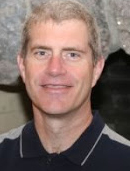
Math education professor David Coffey isn’t one to tell teachers — new or experienced — how to best reach students. He just wants them to make sure they are reaching their students.
 “I try to be accepting of the fact that I know there are effective teachers who use lectures,” Coffey said.
“I try to be accepting of the fact that I know there are effective teachers who use lectures,” Coffey said.
For his teachers-to-be at Grand Valley State University in Michigan, Coffey models the project-based learning he loved as a junior high math teacher, while teaching the someday teachers to be ready for what their future schools support.
He blogs on teaching and project-based learning at Delta Scape.
“Here’s what works for me,” he said. “You need to find out what works for you and you need to prove that it works for all of your students. And then I normally ask ‘How do we collect the data that show it works?’ ”
Fitting Math into Project-Oriented Lessons
When it comes to project-based learning for math, Coffey was initially unsure it could work. He was brought into a test project to try it out.
For him and his students, he said, it did work.
“I found that students that might have otherwise been turned off by mathematics becoming very engaged in the work. They became very interested in the lessons that were going on and they were learning,” Coffey said.
In his classroom, project-based learning met his guidelines for success. Example projects include having students:
- Plan a dream home to learn about perimeter, square-footage, volume and other lessons.
- Plan vacations and work out conversions to change money and time zones.
- Create a textbook for their work with fractions. That’s a lesson he uses with college students today: Create the textbook and show me how you would teach this concept.
“What sold me on project-based learning is that I didn’t have to sell it to students,” he said.
Students ask for help when they need it, so he doesn’t have to waste time teaching concepts, such as whole numbers, they already understand. He keeps the book handy for those reviews. Coffey doesn’t shy away from quizzes and tests to confirm students are mastering what they need to know. It is part of the quantification of which he’s fond.
Advice for Implementing Project-Based Learning
For teachers who want to try project-based learning to see if it is a good fit for their students, Coffey offers these suggestions:
Know the Goal
Before designing any project (or any lesson for that matter), teachers should know what they want students to master in the lesson. Have goals and have a plan to track success. Design the project around what you want the students to learn, Coffey said. Could planning a city teach about civics? What math lessons can be learned by creating a business plan or tackling urban planning?
Allow Plenty of Time
Jumping into project learning with a short lesson might sound like a good way to try it out. But Coffey argues against it. A lesson of a week or two doesn’t give teachers enough time to recalibrate, review and really dig into project learning. He suggests teachers trying out project learning find a big unit or a quarter-long project to tackle.
Find out Where You Are
Before starting any project with his students, Coffey would quiz them to make sure they were ready for the basics of the project. If not, he’d review the groundwork principles.
Check in
Once a project was under way, Coffey had smaller projects or pieces of the larger project to check that students were learning what they needed to learn to succeed with the unit. In the dream house project, for example, students created a name plaque for the home’s front. By doing so they demonstrated understanding of the geometry Coffey wanted them to know.
Coffey said his experiences with project-based learning resulted in student understanding, buy-in and peer cooperation — success by any standards.
But most important for any success are the results: reaching every kid in a class.
Sources
Delta Scape, Coffey’s blog covering project-based learning and other educational issues.
@delta_dc, Coffey’s Twitter feed.
Categorized as: Tips for Teachers and Classroom Resources